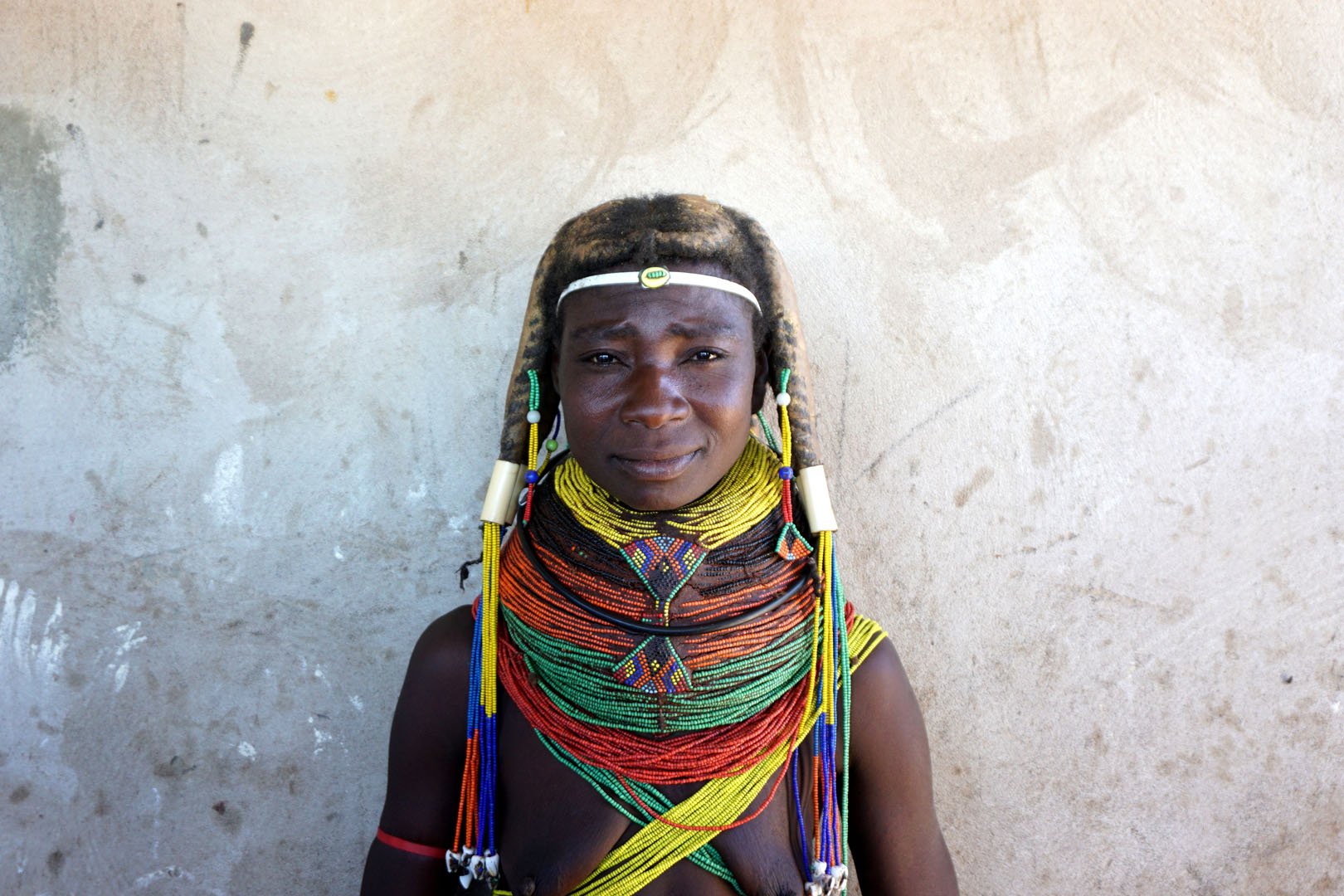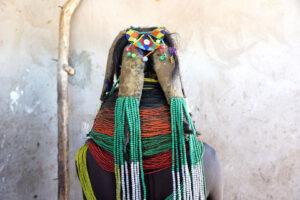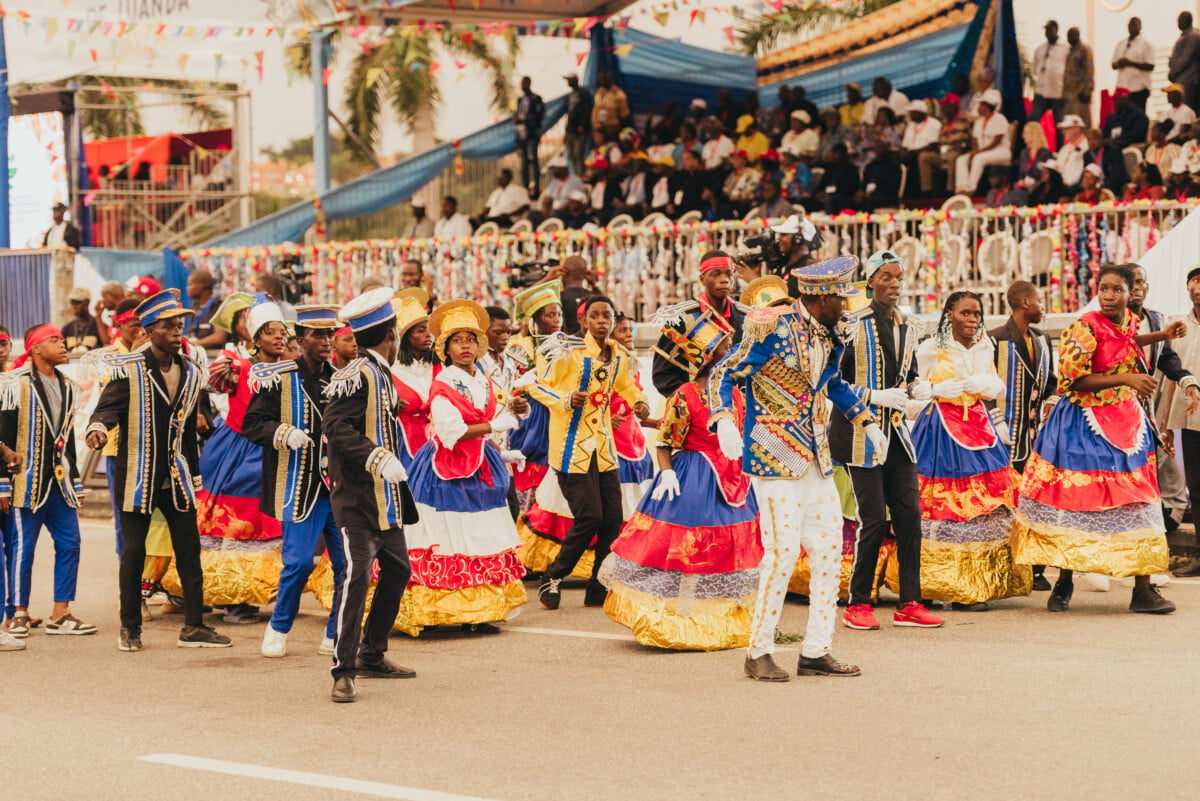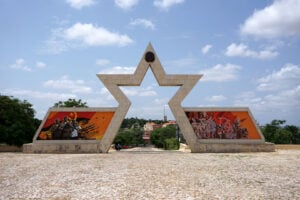10 days tour – Luanda & Southern Tribes
10 days tour – Luanda & Southern Tribes
Dive into the deep south of Angola. Here you really go back to basics and time seems to have stood still. The south of Angola is mainly known for the many local tribes that still live here. Many of them still dress traditionally and live according to ancient customs. Few tourists come here and often they are very curious when they meet people from far away. The cities in this region are also unique, especially the coastal city of Namibe, which is full of art deco buildings from bygone times.







General info
| Days | 10 days / 9 nights |
| Best travel time | Whole year |
| Destinations | Luanda, Namibe, Lubango, Cunene, Huila |
| Price | 1 person: € 4900 2 people: € 4480 p.p. 3-4 people: € 4180 p.p. 5-8 people: € 3795 p.p. 9 or more people: € 3300 p.p. |
| Including | Accommodation Transportation on the ground Domestic flights Local guide Driver Breakfast Lunch & dinner while camping Camping materials Entry fees |
| Excluding | International flights Insurance Lunch & Dinner Tips for the guide Personal expenses |
Itinerary
Day 1 – Luanda – Arrival
Arrive in Luanda, Angola’s energetic capital overlooking the Atlantic Ocean. After airport pick-up, meet your guide and head to the city centre for your first exploration of the country’s history and culture.
Visit the Fortaleza de São Miguel, a 16th-century fortress built by the Portuguese that today serves as the Army Museum. Its collection of military relics and striking murals in socialist-style art make it one of the city’s most memorable sites.
Continue to the mysterious Iron Palace (Palácio de Ferro), an elegant cast-iron building believed by many to have been designed by Gustave Eiffel.
See the colonial Igreja de Nossa Senhora da Nazaré, one of Luanda’s oldest churches, before visiting the monumental Mausoleum of Dr António Agostinho Neto, Angola’s first president. End the day at 1 May Square, a lively hub reflecting Luanda’s mix of past and present.
Overnight stay in a hotel in Luanda.
Day 2 – Luanda – Namibe
Enjoy a relaxed morning in Luanda before your flight to Namibe, the coastal gateway to Angola’s desert region.
Upon arrival, discover Namibe’s Art Deco city centre, filled with pastel-coloured facades and palm-lined streets that recall its colonial past. The slow rhythm of life here contrasts beautifully with the bustle of the capital.
Overnight stay in a hotel in Namibe.
Day 3 – Namibe – Tchitundo Hulo – Virei
We travel by 4×4 into the Namibe Desert, one of the oldest deserts on earth. Our first stop is Tchitundo Hulo, an open-air gallery of prehistoric rock engravings and paintings, a silent witnesses to Angola’s ancient human history.
Along the way, spot the unique welwitschia plant, found almost exclusively here. Some specimens are over a thousand years old and symbolise survival in extreme conditions.
Highlight: Arrive in Virei, home of the Mucubal people. Explore the village and its small market, where locals trade handmade crafts and everyday goods. This is a rare opportunity to experience authentic tribal life far from modern cities.
Overnight camping in the Virei region.
Day 4 – Virei – Tombwa
Continue your off-road journey towards the Atlantic coast. The landscape changes from rocky desert to towering dunes and salt plains.
Pass through areas of pink sand dunes before reaching the Arco Oasis, a natural arch rising from the desert floor surrounded by patches of green vegetation. Nearby, explore the dramatic Red Canyon, its cliffs glowing in the afternoon sun, one of southern Angola’s most photogenic spots.
Overnight camping near Tombwa.
Day 5 – Tombwa – Rocha – Namibe
This morning visit the eerie “Desert Ship” Vanessa, a rusted cargo vessel stranded in the dunes, a reminder of how close the desert lies to the sea. Take a walk through Tombwa, a quiet fishing town once known as Porto Alexandre during the Portuguese era.
Highlight: Visit the nearby fishing village of Rocha, where colourful boats line the beach and fishermen mend their nets by hand. Learn more about life along Angola’s remote Atlantic coast before returning to Namibe.
Overnight stay in a hotel in Namibe.
Day 6 – Namibe – Lubango
Drive inland towards the cooler highlands of Lubango. En route, stop to see a remarkable zebra-striped rock formation, a striking natural pattern created by mineral layers.
Highlight: Pause at the iconic Serra da Leba Pass, whose dramatic switchbacks descend from the plateau to the plains below, a view featured on Angolan currency and considered one of the country’s great engineering feats.
In Lubango, visit the Cristo Rei statue, built in 1957 and standing high above the city, and the Tundavala Gap, a breathtaking viewpoint at the edge of the escarpment.
Overnight stay in a hotel in Lubango.
Day 7 – Lubango – Cunene
Head south towards Cunene Province, a region known for its ethnic diversity and traditional lifestyles.
Highlight: Meet different tribal groups such as the Muhimba, Macahone, Vatwa, and Mundimba. Each has its own customs, attire, and language, offering a rich insight into Angola’s cultural mosaic. In the evening, settle into a homestay with a Himba family and experience local hospitality.
Note: most tribes are nomadic, so we never know exactly which ones we’ll encounter.
Overnight stay at a Himba homestay.
Day 8 – Cunene – Chibia
We drive north through rugged terrain towards Chibia, another crossroads of tribal cultures.
Highlight: Visit the lively Chibia Market, where members of different ethnic groups gather to trade food, livestock and handmade jewellery. Meet the Mumhila people, recognised by their distinctive beaded hairstyles and colourful dress.
Overnight stay in a basic hotel in Chibia.
Day 9 – Chibia – Lubango – Luanda
Spend the morning visiting the Huíla Waterfall, a tranquil spot surrounded by lush vegetation. See one of the region’s oldest churches and the small local museum, offering a glimpse into life in southern Angolan life.
Later, transfer to the airport for your flight back to Luanda. Upon arrival, check in to your hotel and enjoy your final evening in the capital.
Overnight stay in a hotel in Luanda.
Day 10 – Luanda – Departure
Airport transfer for your departure flight.
End of tour.